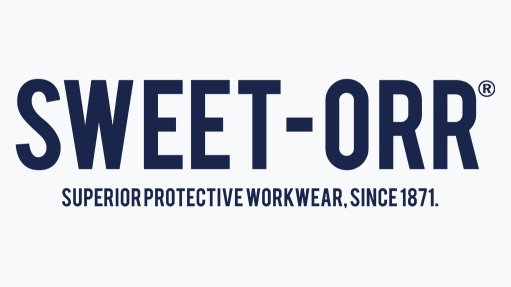The importance of health and safety in construction
This article has been supplied.
By: Morag Evans - CEO of Databuild
In South Africa, more than 5,900 accidents in the construction industry were reported for 2023. Of these, 32.3% were ‘struck by’ accidents (produced by forcible contact or impact between the injured person and an object or piece of equipment) signifying the importance of adhering to health and safety regulations. While this is a legal requirement, these regulations have been designed to help safeguard human lives. Understanding the risks and challenges associated with non-compliance is crucial for every stakeholder in the local construction sector.
Of course, ignoring health and safety regulations is not an option. From a liability perspective, if a company has not made any legal appointments as prescribed by the Occupational Health and Safety Act (OHSA), the liable party automatically becomes the CEO of the business. Furthermore, if injuries occur without the employer taking the necessary pre-emptive steps as prescribed by the OHSA, there will be significant financial repercussions as well as criminal liability, potentially leading to imprisonment.
Employers may face fines up to R1 million for breaches, and in severe cases, imprisonment for up to two years. Moreover, the Department of Labour has the authority to shut down a workplace if it poses a risk to employee health and safety. This can have significant reputational damage on a business which it will find difficult, if not impossible, to recover from.
Navigating challenges
One of the biggest challenges in maintaining compliance with health and safety legislation is navigating the complex regulations and cumbersome government platforms required for reporting Injuries on Duty (IODs). These obstacles can make compliance expensive and daunting, especially for smaller firms that do not have dedicated health and safety resources to call upon.
One of the ways to overcome this is by appointing a specialist OSHA consulting firm. Such a firm can assist the construction company in setting up the necessary compliance frameworks, training staff, and managing ongoing safety requirements. Having access to such a partner also means the company can use them to handle IODs if they should occur.
However, to foster a safe working environment, companies must prioritise consistent training and maintain visible safety signs in high-risk areas. Daily reinforcement of standards and consistent disciplinary actions for contraventions are essential. These practices help create a culture where safety is seen as non-negotiable, encouraging every employee to take personal responsibility for their safety and that of their colleagues.
Technology boost
Advancements in technology offer promising enhancements to health and safety standards in construction. Take for example the growing adoption of wearable devices. These can monitor the health and safety of workers in real time, providing alerts for hazardous conditions and helping prevent accidents.
Drones can be used for site inspections and accessing hard-to-reach areas without putting human lives at risk. There are also digital platforms that can streamline compliance reporting and improve the efficiency of safety audits. Not only do these technologies improve safety, but they contribute to improved efficiencies especially when they are integrated into daily construction practices.
Regardless of the technology available and how sophisticated construction techniques are becoming, the focus must always be on health and safety in what is potentially a volatile environment. By embracing new tools and methodologies, those operating in the construction sector can significantly reduce risks and enhance safety, ultimately leading to more secure, productive, and successful construction projects.
Prioritising health therefore becomes not just safety and legal priorities. It is also essential from a moral perspective. Reducing construction accidents must remain the priority as we continue to build the world around us.
Article Enquiry
Email Article
Save Article
Feedback
To advertise email advertising@creamermedia.co.za or click here
Comments
Press Office
Announcements
What's On
Subscribe to improve your user experience...
Option 1 (equivalent of R125 a month):
Receive a weekly copy of Creamer Media's Engineering News & Mining Weekly magazine
(print copy for those in South Africa and e-magazine for those outside of South Africa)
Receive daily email newsletters
Access to full search results
Access archive of magazine back copies
Access to Projects in Progress
Access to ONE Research Report of your choice in PDF format
Option 2 (equivalent of R375 a month):
All benefits from Option 1
PLUS
Access to Creamer Media's Research Channel Africa for ALL Research Reports, in PDF format, on various industrial and mining sectors
including Electricity; Water; Energy Transition; Hydrogen; Roads, Rail and Ports; Coal; Gold; Platinum; Battery Metals; etc.
Already a subscriber?
Forgotten your password?
Receive weekly copy of Creamer Media's Engineering News & Mining Weekly magazine (print copy for those in South Africa and e-magazine for those outside of South Africa)
➕
Recieve daily email newsletters
➕
Access to full search results
➕
Access archive of magazine back copies
➕
Access to Projects in Progress
➕
Access to ONE Research Report of your choice in PDF format
RESEARCH CHANNEL AFRICA
R4500 (equivalent of R375 a month)
SUBSCRIBEAll benefits from Option 1
➕
Access to Creamer Media's Research Channel Africa for ALL Research Reports on various industrial and mining sectors, in PDF format, including on:
Electricity
➕
Water
➕
Energy Transition
➕
Hydrogen
➕
Roads, Rail and Ports
➕
Coal
➕
Gold
➕
Platinum
➕
Battery Metals
➕
etc.
Receive all benefits from Option 1 or Option 2 delivered to numerous people at your company
➕
Multiple User names and Passwords for simultaneous log-ins
➕
Intranet integration access to all in your organisation





















